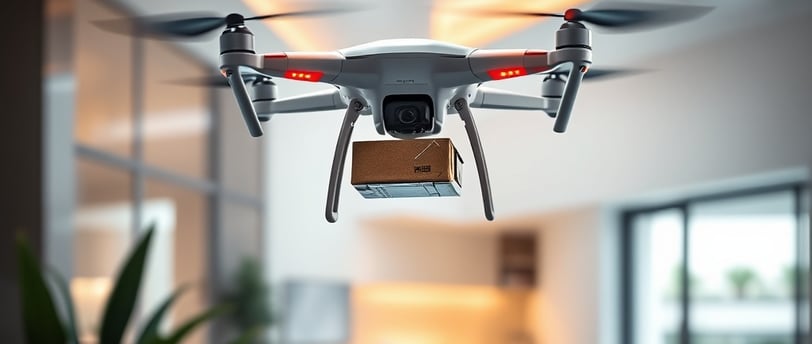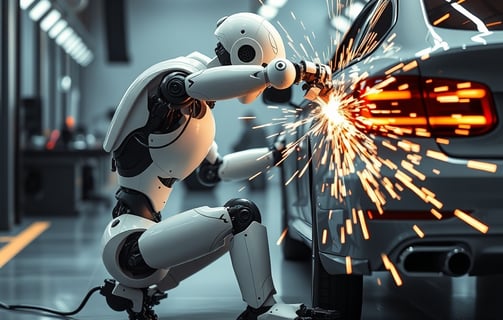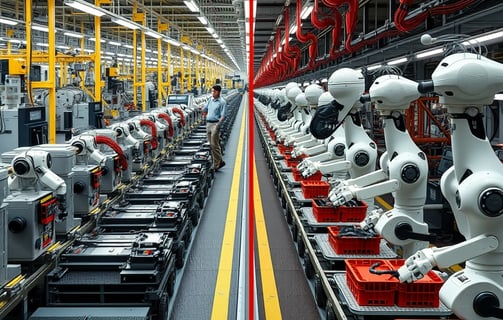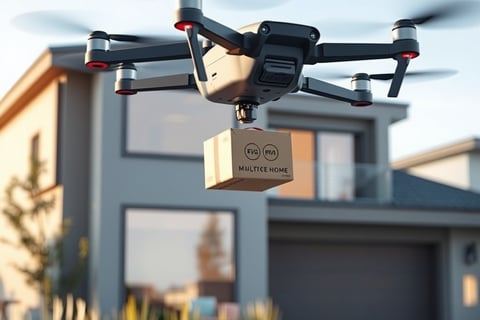The Rise of the Robots: Are We Ready for an Automated Future?
Dive into the rapid advancements in robotics and automation, and their potential to transform manufacturing, logistics, and even our homes


The rise of robotics and automation isn’t just the stuff of sci-fi movies anymore. It’s happening here and now, transforming industries, revolutionizing our daily lives, and raising eyebrows about what it all means for humanity. From self-driving cars to smart vacuum cleaners that feel like family members (let’s admit it, we’ve named them), automation is creeping into every corner of our world. But are we really ready for this automated future?
A Glimpse at the Rapid Advancements in Robotics
Remember when robots were clunky, boxy, and couldn’t walk without falling over? Today’s robots are agile, precise, and scarily good at their jobs.
Take Boston Dynamics’ Spot, for example—a robot dog that can climb stairs, open doors, and even dance better than your uncle at weddings. Or Tesla’s Optimus, a humanoid robot designed to perform mundane tasks like picking up groceries. These machines aren’t just gimmicks; they’re engineered to handle complex tasks with precision.
And it’s not just about mobility. Robots today can perform surgeries, write songs, and even flip burgers. Yes, your favorite fast-food joint might soon have a robot chef. But don’t worry; it probably won’t judge your extra-large fries order.
Transforming Manufacturing
Manufacturing has always been at the forefront of automation. The assembly lines of yesteryears, which relied heavily on human labor, are now dominated by robots. Machines like FANUC’s industrial robots can assemble products faster, more accurately, and without taking coffee breaks.
This shift has brought benefits like increased efficiency and reduced costs. Companies can now produce more goods in less time, keeping up with consumer demand. But there’s a flip side. As machines replace human workers, job displacement becomes a real concern. In the words of Stephen Hawking, “Artificial intelligence and automation could lead to the end of work as we know it.”
While that sounds ominous, experts argue that automation will also create new jobs—just different ones. The challenge lies in retraining the workforce to adapt to these new roles.
Revolutionizing Logistics
Have you ever wondered how your online shopping order arrives so quickly? Robots. Warehouses are buzzing with autonomous machines that sort, pack, and transport goods. Amazon’s Kiva robots, for instance, glide around warehouses, reducing the time it takes to fulfill orders.
Drones are also becoming a game-changer. Companies like Zipline use drones to deliver medical supplies to remote areas, proving that robots can save lives, not just time. And self-driving trucks are on the horizon, promising safer and more efficient freight transportation.
But let’s not ignore the elephant in the room: accidents. While these technologies are impressive, they’re not infallible. A rogue drone dropping a package in your neighbor’s yard might be funny, but a self-driving truck malfunctioning on a highway? Not so much.
Robots in Our Homes
Automation isn’t confined to factories and warehouses; it’s knocking on our front doors. Smart home devices like Amazon Alexa and Google Nest are just the beginning. Advanced robots can now clean our floors, mow our lawns, and even provide companionship.
Take the robot vacuum cleaner, for example. It doesn’t just clean; it maps your house, avoids obstacles, and sometimes even chats with you. One user joked, “My robot vacuum knows my house better than I do. Maybe it should pay rent.”
On a more serious note, robots are also helping the elderly and disabled live more independently. Robotic caregivers can assist with daily tasks, monitor health, and even call for help in emergencies. It’s a heartwarming example of technology making a meaningful impact.
The Ethical Dilemmas
With great power comes great responsibility. As robots become more integrated into our lives, ethical questions arise. Who’s accountable if a self-driving car causes an accident? How do we ensure robots don’t perpetuate biases encoded in their algorithms? And, perhaps most importantly, how do we prevent job losses from exacerbating inequality?
As Elon Musk aptly put it, “With artificial intelligence, we are summoning the demon.” Dramatic? Maybe. But it underscores the importance of approaching automation cautiously.
Conclusion: Embracing the Future
The rise of the robots is inevitable, but our readiness depends on how we adapt. Policymakers need to establish regulations to ensure safety and fairness. Companies must invest in retraining programs for displaced workers. And as individuals, we need to stay curious and open to learning new skills.
In the words of Isaac Asimov, “Science can amuse and fascinate us all, but it is engineering that changes the world.” Robots and automation are here to stay, and while they might take over some jobs, they can’t replace human creativity, empathy, or humor.
So, let’s welcome our robotic colleagues and make this automated future a collaborative one. Just don’t let them win at karaoke night.






